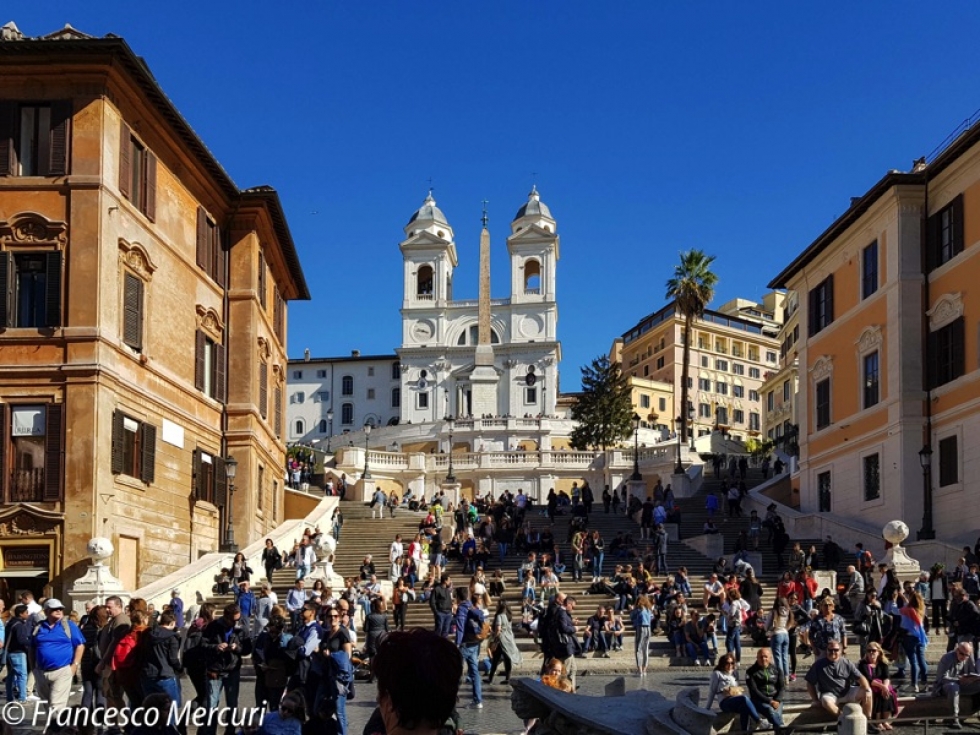The steps were built to create a link between two different zones of the city, the upper one, that had a strong French presence, and the lower one, with a strong Spanish presence, from which the square takes its name. Before its construction, between 1723 and 1726, different solutions were proposed to fill the space and create, in this way, a connection. In the second half of the 16th century some elms were planted, but this solution wasn’t very convincing. Then, there came the project of building a huge fountain, but it was extremely difficult to realize because of the difference in height. Studying this project, however, the idea of the steps came up. Cardinal Mazzarino decreed its construction. The first projects were ready in 1660, but, after the cardinal’s death, they were put aside. It’s not until the beginning of the 18th century, when the Papal State and France overcame their contrasts about the property of the area, that the real project started to take shape. Works began in 1723, under the pontificate of Innocent XIII, and ended 3 years later, with Benedict XIII, although the steps were already inaugurated in 1725, for the celebration of the Jubilee. It is made of Travertine, and it is decorated with a series of flights and balustrades, that make the overall shape very harmonious and spectacular at the same time, in an exaltation of late Baroque architecture. The 135 steps are articulated in 12 flights, that seem to almost lay down on the hill in a sequence of narrowings and protrusions that leave the spectator with bated breath. The staircase was incredibly successful from the very beginning. During warm summer evenings in the years right after its inauguration, it was, like today, a hotspot for young people looking for entertainment and fun. Then, like today, it was forbidden to stay on it and sit on the steps, although these bans were and are often ignored. In the 1800s a weird habit developed: young women from Ciociaria (area in the lower side of Lazio) used to sell flowers on the steps in their traditional dresses. It was not unusual for artists and painters staying in the area to use these young girls as models for their works. Clear evidence that they were probably beautiful girls! At the end of the 19th century this tradition was stopped, and it was replaced with the arrangement of azaleas that in Spring embellish the staircase, making it a real terrace-garden. Azaleas are the floral symbol for Spring. They were particularly loved as decorative plants by the Ancient Romans, that also used them for their particular nectar. They were fond of them, although they knew quite well that some varieties of these flowers were not edible. Columella, well know Roman writer that lived in the 1st century CE and agriculture expert, called it “toxic honey”. Moving back to our stairway, we should say that on the memorial stones, at its bottom there are sculpted both lilies, heraldic symbol of the French monarchy, and eagles. These animals were symbols of the Conti family, to which pope Innocent XIII, the one that started its construction, belonged. One last mention should be given to the architect of this masterpiece of the 1700s, Francesco De Santis. Already known before the building of the stairway, he became exceptionally famous after this work. Even nowadays he is considered one of the greatest artists of the Baroque period. Nevertheless, two years after the completion of this work, he was sued to compensate the damages to the stairway caused by the rain, that, according to someone, showed structural blemishes for which he was responsible. He was released from all charges, but he never received any other important commissions ever since. We could say that the steps were his fortune and his ruin!
Giuseppe Rosselli












